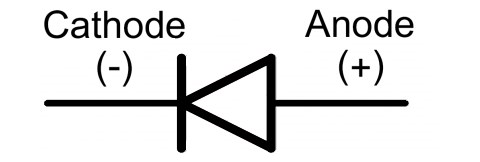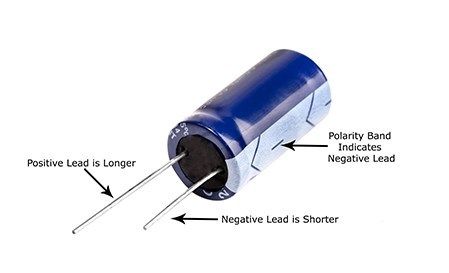OUTLINE:
Are Resistors Polarized
 195
195As we all know, it’s essential to check the polarity of components before we use them. This passage will give information on whether resistors are polarized, why or why not, and tips on how to determine if a component has polarity.
Do Resistors Have Polarity
In general, resistors do not have polarity. Unlike components such as capacitors or diodes, resistors are symmetrical and can be connected in either direction in a circuit without affecting their functionality. The resistance value is determined by the physical properties of the resistor material and its dimensions, rather than any inherent directional properties.
When you look at a resistor, you may notice color bands on its body that indicate its resistance value. The order of these color bands does matter, but it doesn't imply a specific polarity. Instead, the color bands are used to determine the resistance value and tolerance of the resistor based on a color code.
So, when using resistors in a circuit, you can connect them in either direction without concern for polarity.
.webp)
Why doesn't Resistors Have Polarity
The lack of polarity in resistors is a fundamental aspect of their design based on their function within an electrical circuit.
A resistor's primary function is to limit or control the flow of electric current in a circuit. This is achieved by introducing resistance to the flow of electrons. Unlike some electronic components, such as diodes or capacitors, resistors do not have a specific direction for current flow.
The resistance of a resistor is determined by its physical properties, including its length, cross-sectional area, and the material from which it is made. These properties are symmetrical, meaning they are the same regardless of the direction of current flow. In other words, the behavior of a resistor is not dependent on the orientation of the current – it resists the flow of electric charge equally, regardless of the direction.
Because of this inherent symmetry in their design and functionality, resistors don't have a specific polarity. You can connect them in either direction in a circuit without affecting their performance. This simplicity and lack of polarity make resistors versatile and easy to use in various electronic applications.
Why is Polarity Important to Components
Polarity is important in electronic components because many components have specific orientations or directions in which they operate correctly. Understanding and correctly implementing polarity is crucial for the proper functioning, reliability, and safety of electronic circuits. Here are some reasons why polarity matters
1. Functionality
Some components, like diodes, LEDs, and polarized capacitors, are designed to allow current to flow in one direction only. Connecting them in the wrong orientation can lead to improper operation or even damage. For example, a diode connected in reverse bias may not allow current to pass through, and an LED connected backward may not light up.

2. Safety
Incorrectly connecting components, especially those with polarity, can pose safety risks. For instance, reversing the polarity of an electrolytic capacitor may lead to its failure, potentially resulting in leakage or even explosion. Understanding and adhering to component polarity guidelines contribute to the overall safety of electronic devices.
3. Component Longevity
Polarized components are designed to operate within specific voltage polarities. Reversing the polarity can lead to stress on the component, potentially causing it to fail prematurely. Following the correct polarity guidelines helps ensure the longevity and reliability of electronic components.
4. Proper Circuit Operation
In many circuits, the correct orientation of components is essential for the circuit to perform its intended function. For example, in power supply circuits, reversing the polarity of certain components may lead to incorrect voltage regulation or other performance issues.
5. Manufacturer Specifications
Electronic components are designed and manufactured with specific polarity requirements. Deviating from these specifications can result in the component not meeting its intended performance characteristics.
To avoid problems associated with incorrect polarity, engineers and hobbyists must carefully read component datasheets, adhere to manufacturer specifications, and follow circuit diagrams. Proper attention to polarity ensures that electronic circuits operate as intended, reducing the risk of damage, improving safety, and promoting the longevity of components and devices.
How to Determine if a Component Has Polarity
Determining whether a component has polarity involves examining its physical and electrical characteristics. Here are some general guidelines to help you identify whether a component is polarized.
1. Look for Markings
Many electronic components have markings that indicate their polarity. For example, electrolytic capacitors often have a longer lead (the positive lead) and a shorter lead (the negative lead). The negative lead may also be marked with a stripe or a minus sign.

2. Check the Datasheet
The datasheet for a component provides detailed information about its specifications, characteristics, and orientation. Always refer to the datasheet for accurate information, especially for more complex components like integrated circuits.
3. Inspect the Physical Shape
Some components have a physical shape that implies polarity. Diodes and LEDs, for instance, usually have one longer lead (positive or anode) and one shorter lead (negative or cathode). Additionally, diodes often have a band or stripe on the side indicating the cathode.
4. Look for Color Codes
Certain components, such as resistors and inductors, may have color bands or markings to indicate their values, but these do not typically convey polarity information.
5. Examine the Component Symbol
Symbols on circuit diagrams can provide clues about polarity. Arrows in the symbol may indicate directionality, such as in the case of a diode.
6. Check for Specific Component Types
Some components are inherently polarized, like electrolytic capacitors, diodes, LEDs, and certain types of transistors. Others, such as resistors and ceramic capacitors, are non-polarized.
7. Use a Multimeter
A multimeter can help you determine the polarity of certain components. For instance, by measuring the forward voltage drop across a diode, you can identify its anode and cathode.
Remember, it's crucial to refer to the component's datasheet and specifications to ensure accurate information about its polarity and proper usage. Always exercise caution and use appropriate tools when working with electronic components to avoid damage or injury.
Final Verdict
In this passage, we answered whether the question "do resistors have polarity" and gave some suggestions on how to determine if a component has polarity in detail. Hopefully it will provide some useful information to you and help you have a better understanding regarding components’ polarity.

Disclaimer: The views and opinions expressed by individual authors or forum participants on this website do not represent the views and opinions of Chipsmall, nor do they represent Chipsmall's official policy.

share this blog to:

